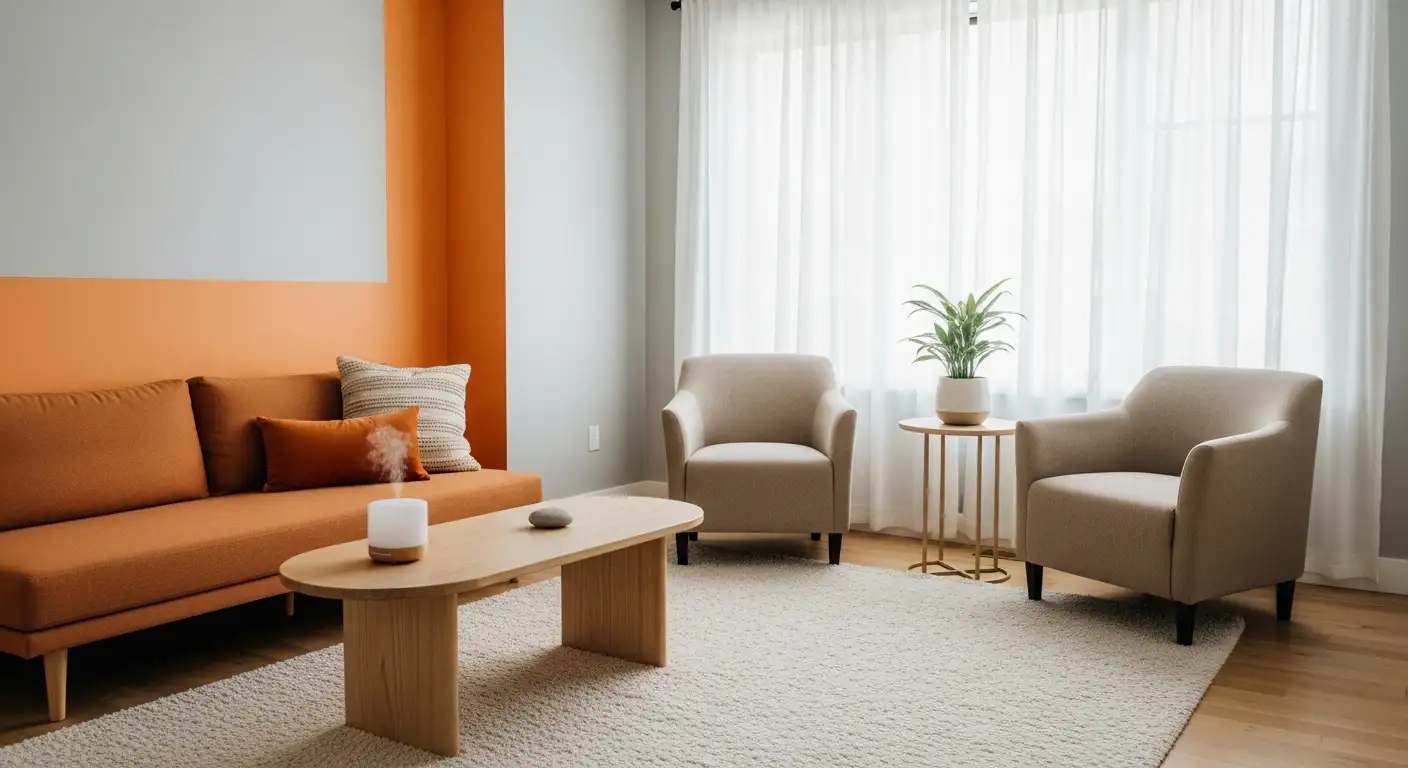Creating Calm: Optimizing Lighting for Autism-Friendly Environments
Understanding the Role of Environment in Autism Support
For individuals with autism, environmental factors profoundly influence emotional regulation, focus, and overall well-being. Among these factors, lighting plays a crucial role in managing sensory sensitivities and preventing overload. This article explores best lighting practices to create sensory-friendly spaces that foster comfort and support behavioral health, especially in settings where Applied Behavior Analysis (ABA) therapy is utilized.
Applied Behavior Analysis (ABA) Therapy: Foundations and Providers
What is Applied Behavior Analysis (ABA) therapy?
Applied Behavior Analysis (ABA) therapy is a scientifically supported approach focused on understanding and modifying behavior through learning principles. It aims to increase helpful behaviors such as communication, social skills, and self-care, while decreasing harmful or problematic behaviors. ABA uses techniques like positive reinforcement, discrete trial training, and functional behavior assessments to develop individualized treatment plans tailored to each individual's needs. This therapy can be delivered in various settings, including homes, schools, and clinics, often involving parent and caregiver training to ensure consistent progress. Numerous studies support ABA’s effectiveness, especially when interventions begin early and are conducted intensively over time.
Who typically provides ABA therapy?
ABA therapy is delivered by trained and licensed professionals specializing in behavioral analysis and autism interventions. Key providers include Board Certified Behavior Analysts (BCBAs), who have advanced training and oversee treatment plans, and Registered Behavior Technicians (RBTs), trained paraprofessionals who implement therapy under supervision. The therapy team may also involve educators and other practitioners skilled in evidence-based behavioral techniques. Providers follow rigorous ethical standards and design personalized treatment plans based on detailed assessments. When selecting ABA providers, it’s important to verify their credentials and confirm adherence to scientifically supported methods.
What are the core principles underlying ABA therapy?
ABA therapy is grounded in evidence-based behavior change strategies such as positive reinforcement, prompting, shaping, fading, and thorough functional behavior assessments. It prioritizes data-driven decision-making and individualized intervention plans to ensure ethical and effective practice. Practitioners uphold ethical standards like respect and beneficence, creating safe, accommodating environments that may include sensory-friendly adjustments such as customized lighting and quiet spaces. Collaboration with families and other professionals is vital, along with continuous documentation and evaluation to refine interventions. Overall, ABA recognizes the impact of environmental factors on behavior and applies research-backed methods to help individuals achieve meaningful, socially significant outcomes.
The Impact of Lighting on Mood, Health, and Behavior in Autism
How Does Lighting Affect Individuals with Autism?
Lighting plays a critical role in influencing mood, health, and behavior, especially for individuals with autism. Soft, adjustable lighting can support emotional regulation and reduce sensory overload, whereas harsh lighting can provoke discomfort and anxiety.
Why Is There Sensitivity to Fluorescent Lighting?
Up to 50% of autistic individuals exhibit severe sensitivity to fluorescent lighting, particularly the flicker caused by lights operating at 60Hz. This flickering can trigger sensory overload, causing distress and even meltdowns. Harsh fluorescent lights increase discomfort, making environments challenging for autistic children and adults alike.
What Role Does Lighting Have in Sensory Overload and Emotional Regulation?
Lighting adjustments such as using dimmable LEDs, reducing glare, and controlling natural light exposure are essential for managing sensory overload. Creating sensory-friendly spaces with diffused natural light, soft-colored surroundings (blues, greens, earth tones), and comfortable furnishings helps autistic individuals feel more secure and supports their emotional regulation.
Technology also aids in reducing sensory stress. Using color filters on screens and minimizing glare further lowers sensory input that may overwhelm.
Implementing these lighting modifications in homes, classrooms, and workplaces can significantly enhance quality of life by promoting calmness and reducing anxiety.
Choosing the Right Lighting: Soft, Dimmable, and Flicker-Free
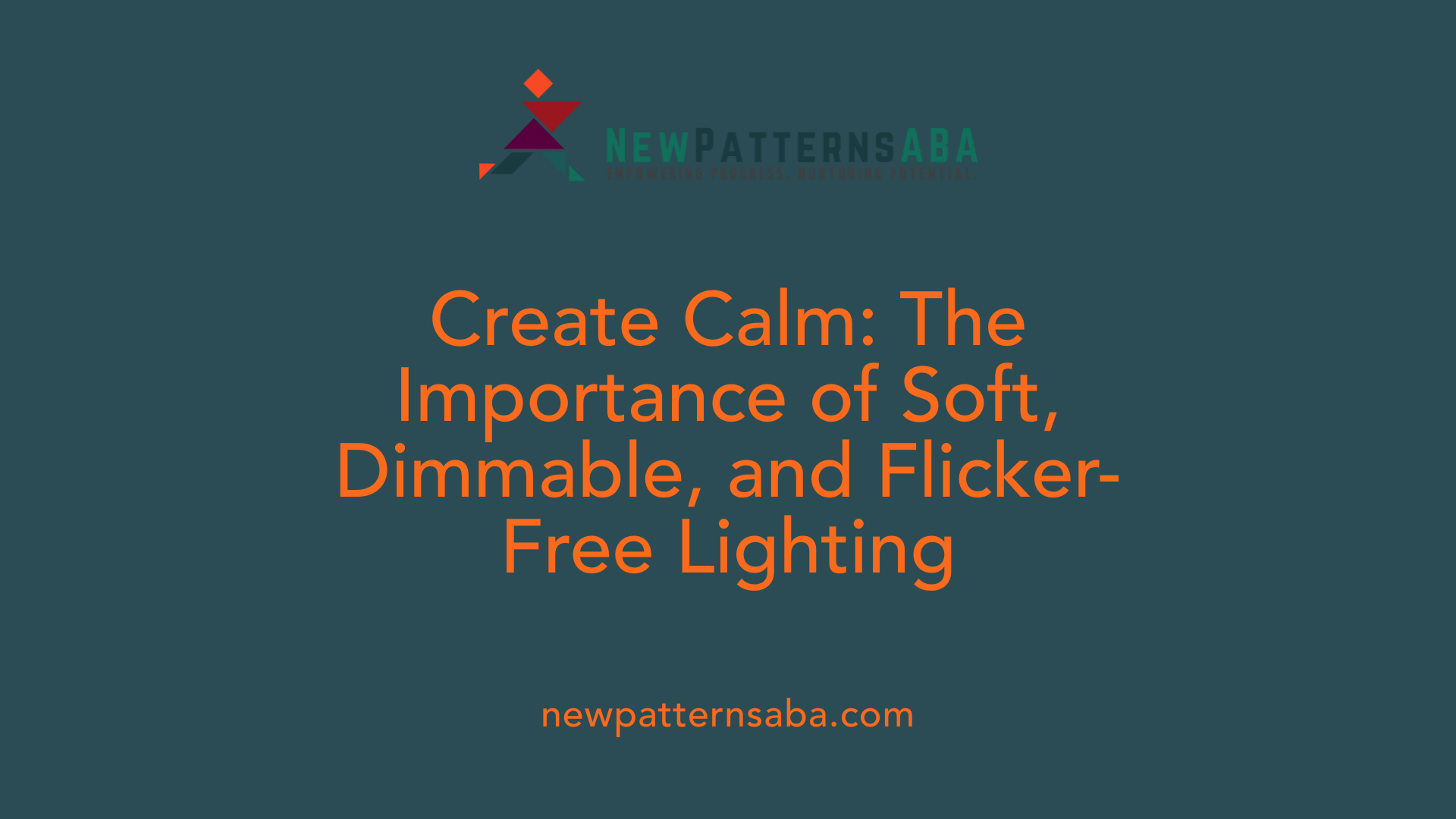
Why Soft, Dimmable Lighting Matters
Lighting plays a crucial role in creating a calming and supportive home environment for individuals with autism. Soft and dimmable lighting helps minimize sensory discomfort and anxiety often triggered by harsh lights. Unlike bright or fluorescent lighting, soft lighting reduces overstimulation, making it easier for autistic individuals to regulate their emotions and focus.
Avoiding Fluorescent Lights and Flicker Effects
Fluorescent lights are notorious for causing sensory overload in autistic people, with up to 50% experiencing severe sensitivity. The flicker, especially at 60Hz, can lead to discomfort, headaches, and even meltdowns in children and adults alike. To prevent this, it's best to avoid fluorescent lighting and instead choose alternatives that do not produce this flicker.
Benefits of Adjustable LEDs and Filters
Installing adjustable LED lights that allow dimming offers flexibility in tailoring the environment to specific needs. These LEDs avoid the flicker issue common to fluorescents and can be paired with color filters to further reduce glare and harshness. Dimmable LEDs enable caregivers to create soothing sensory spaces where individuals with autism feel safe and relaxed.
Together, these lighting choices form a foundational part of designing sensory-friendly homes that foster well-being and reduce stress.
Harnessing Natural Light Safely in Sensory-Friendly Spaces
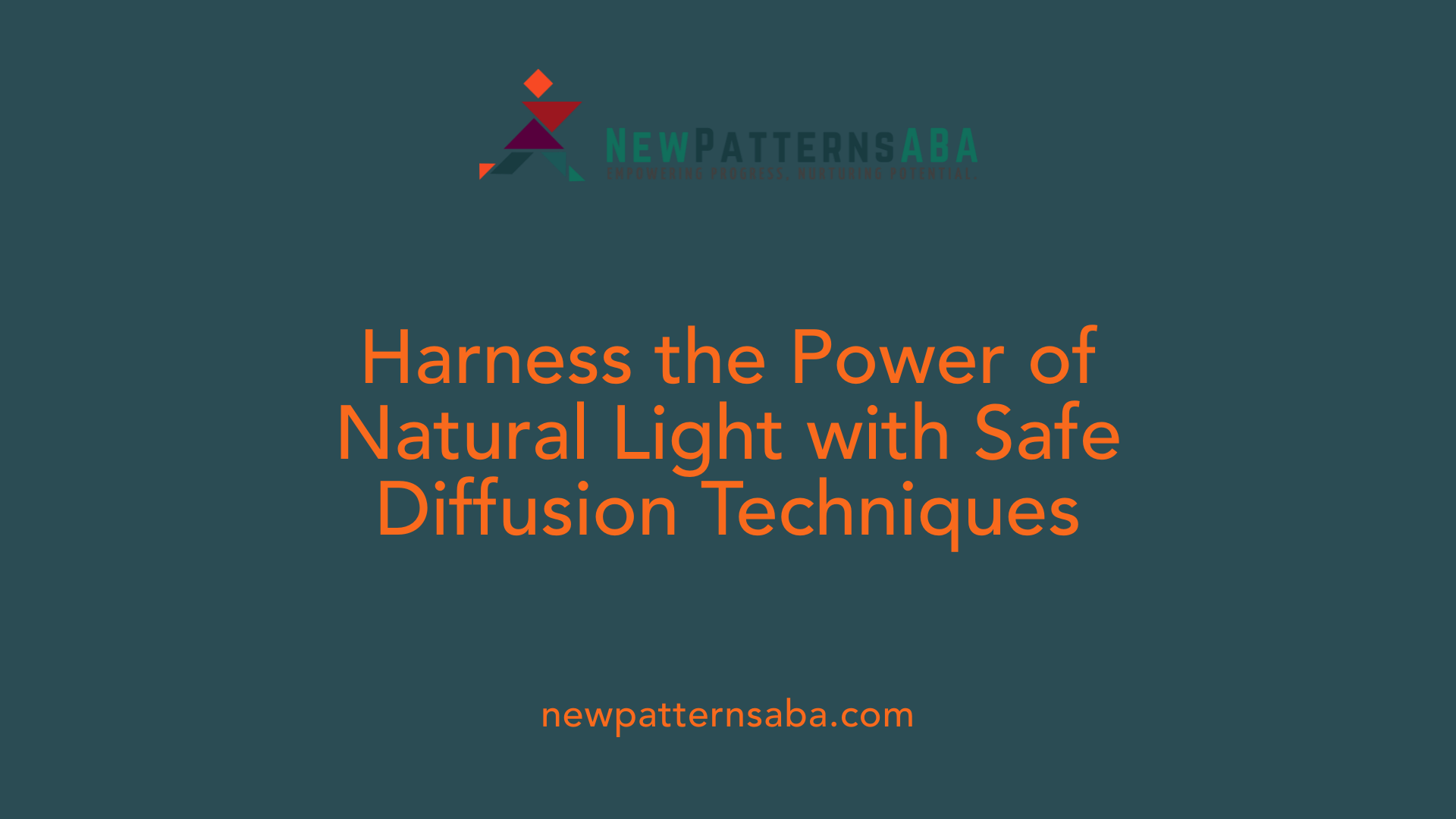
Benefits of natural light with diffusion
Natural light is valuable in creating sensory-friendly home environments for individuals with autism. It offers health benefits and supports emotional well-being, enhancing mood and reducing stress. However, direct sunlight can cause glare, which may trigger discomfort or sensory overload. Diffusing natural light with sheer curtains, blinds, or frosted windows softens its impact, enabling a calm and balanced atmosphere.
Controlling glare and using blinds
Controlling glare is critical to maintaining a comfortable space. Window coverings such as adjustable blinds or shades allow residents to tailor the amount of natural light entering the room. This flexibility helps prevent harsh light exposure during peak daylight hours. Using blinds also aids in minimizing reflections and flicker, which can be distressing for individuals sensitive to visual stimuli.
Combining natural light with soft, muted color schemes
Complementing diffused natural light with soft, muted colors like blues, greens, and earth tones fosters relaxation and helps manage sensory input. These calming hues reduce visual overstimulation and create an inviting environment. Incorporating this palette in wall paint, furnishings, and décor supports emotional regulation and enhances the overall sensory experience.
By thoughtfully integrating diffused natural light, adjustable window treatments, and soothing color schemes, homes can become supportive spaces that respect and accommodate sensory sensitivities common among individuals with autism.
Designing Sensory Spaces to Complement ABA Therapy

Creating Quiet Retreat Areas with Controlled Lighting
ABA therapy supports individuals with autism by improving communication and social skills, but the therapeutic impact can be enhanced by a home environment that supports emotional regulation. Designating quiet retreat areas helps create a safe space where sensory input is minimized, allowing individuals to self-regulate during or after therapy sessions. Lighting in these spaces should be soft and dimmable, avoiding harsh fluorescents that can trigger discomfort or sensory overload. Using dimmable LEDs and filters to reduce glare creates a calming atmosphere conducive to relaxation and focus.
Incorporating Sensory Tools for Self-Regulation
Sensory tools such as weighted blankets, sensory swings, tactile toys, and noise-cancelling headphones play an important role in complementing ABA therapy by providing tactile and auditory comfort. These tools help individuals manage anxiety and sensory sensitivities, supporting behavioral progress made during therapy. They can be integrated into retreat spaces or everyday areas to offer on-demand sensory relief, promoting overall well-being and independence.
Collaboration with Occupational Therapists for Personalized Environments
Creating an optimal sensory environment is most effective when tailored to individual needs. Collaboration with occupational therapists can guide specific sensory accommodations, ensuring the home space aligns with each person’s unique sensitivities and preferences. Occupational therapists can recommend soundproofing techniques, appropriate color schemes featuring soft and muted tones like blues and greens, and strategies for managing natural light to reduce glare. This personalized approach enhances the therapeutic benefits of ABA by fostering a supportive, predictable environment that reduces stress and sensory overload.
Mitigating Sensory Overload: Practical Lighting Adjustments
How can glare and flicker be reduced to help individuals with autism?
Harsh fluorescent lighting often causes discomfort and sensory overload for autistic individuals, with up to 50% experiencing severe sensitivity, especially to flicker from lights operating at 60Hz. To address this, it's essential to reduce glare by diffusing natural light through window treatments like blinds or sheer curtains. Installing flicker-free lighting options such as dimmable LED bulbs and using light filters helps create a more calming and comfortable environment. Avoiding harsh overhead fluorescent lights also prevents anxiety and meltdowns.
What role do color filters and screen adjustments play?
Technology use, such as screens, can compound sensory challenges. Applying color filters over screens and minimizing glare reduces visual strain and sensory overload. These adjustments ensure that lighting from digital devices is less intense and more soothing, complementing the overall sensory-friendly environment.
How should noise be managed alongside light for full sensory support?
Since sensory sensitivity often involves both light and sound, managing noise is equally important. Implementing soundproofing techniques and providing background noise like white noise or soft music can soothe auditory sensitivities. Coupled with the proper lighting modifications, these measures form a comprehensive approach to sensory regulation, helping individuals with autism maintain focus and emotional balance.
Monitoring and Adjusting Environments Based on Behavioral Responses
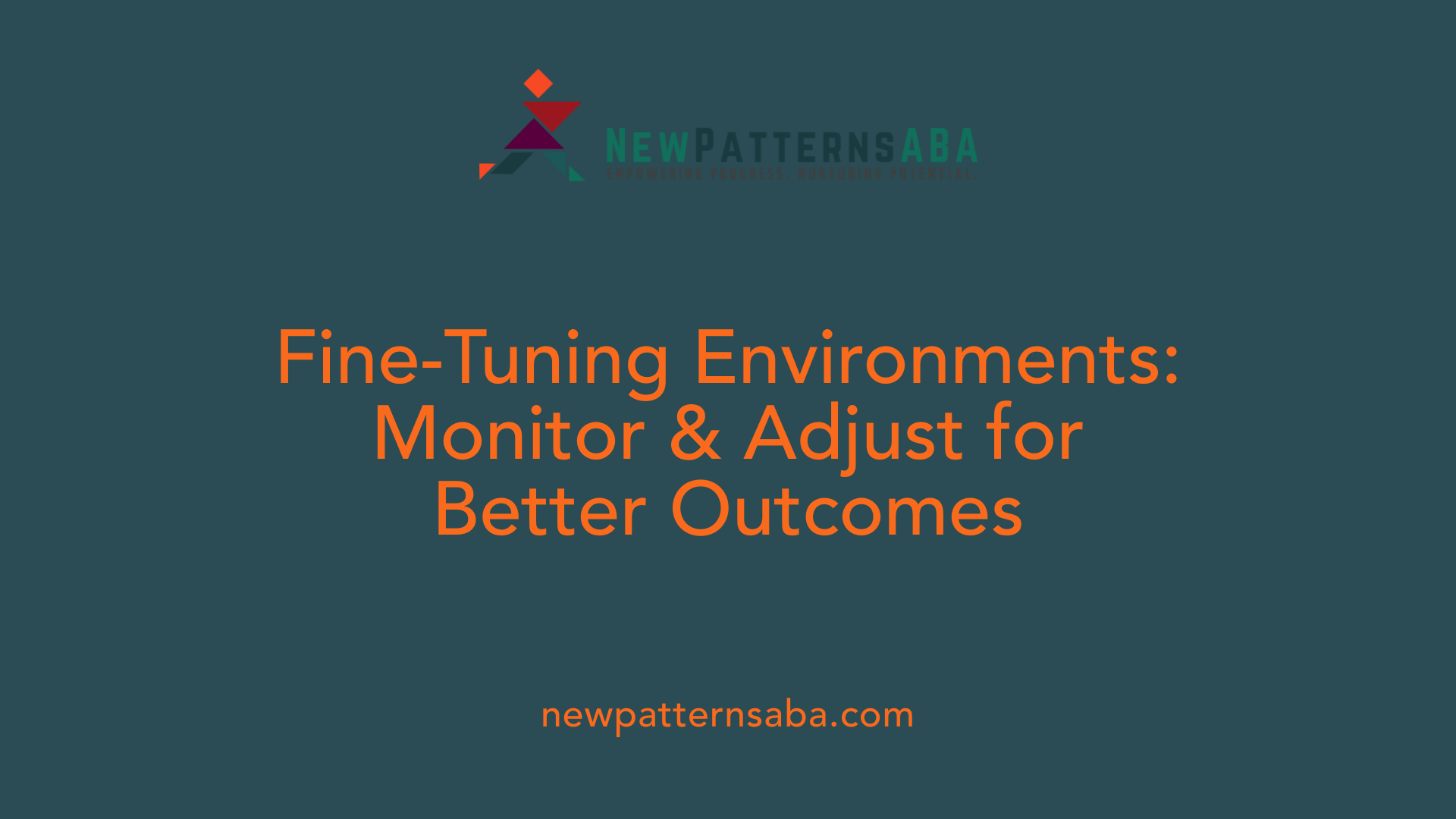
How is progress monitored during ABA therapy?
Progress during ABA therapy is systematically monitored through careful data collection on the individual's behavior. Therapists record observations of targeted behaviors, skill development, and reductions in problem behaviors. This data is regularly reviewed by a Board Certified Behavior Analyst (BCBA) to objectively assess progress and make informed decisions.
Functional Behavioral Assessments (FBAs) also play a crucial role by identifying the underlying causes of specific behaviors, guiding necessary adjustments in therapy. Caregivers and therapists work together, maintaining consistent observation and recording behaviors both in therapy and home environments.
Collaboration between therapists, caregivers, and families
Effective environmental monitoring relies on close collaboration among therapists, caregivers, and families. This team approach ensures data is gathered comprehensively across different settings, allowing for a more accurate understanding of behavior patterns. Input from family members also helps identify environmental factors that may impact emotional regulation and comfort.
Using feedback for continuous environmental optimization in therapy settings
Feedback from behavioral monitoring informs continuous adjustments to the environment to better support the individual’s needs. For example, modifications such as dimmable lighting, reducing sensory triggers like harsh fluorescent lights or loud noises, and creating quiet, organized spaces can be made based on observed responses. These environmental tweaks help reduce stress and sensory overload, promoting overall well-being.
Occupational therapists often collaborate in this process to tailor sensory accommodations, ensuring that the therapeutic environment remains supportive as behaviors and needs evolve. This ongoing optimization is essential to maximizing the effectiveness of therapy and supporting emotional regulation and focus.
Challenges and Solutions in Implementing Sensory-Friendly Lighting
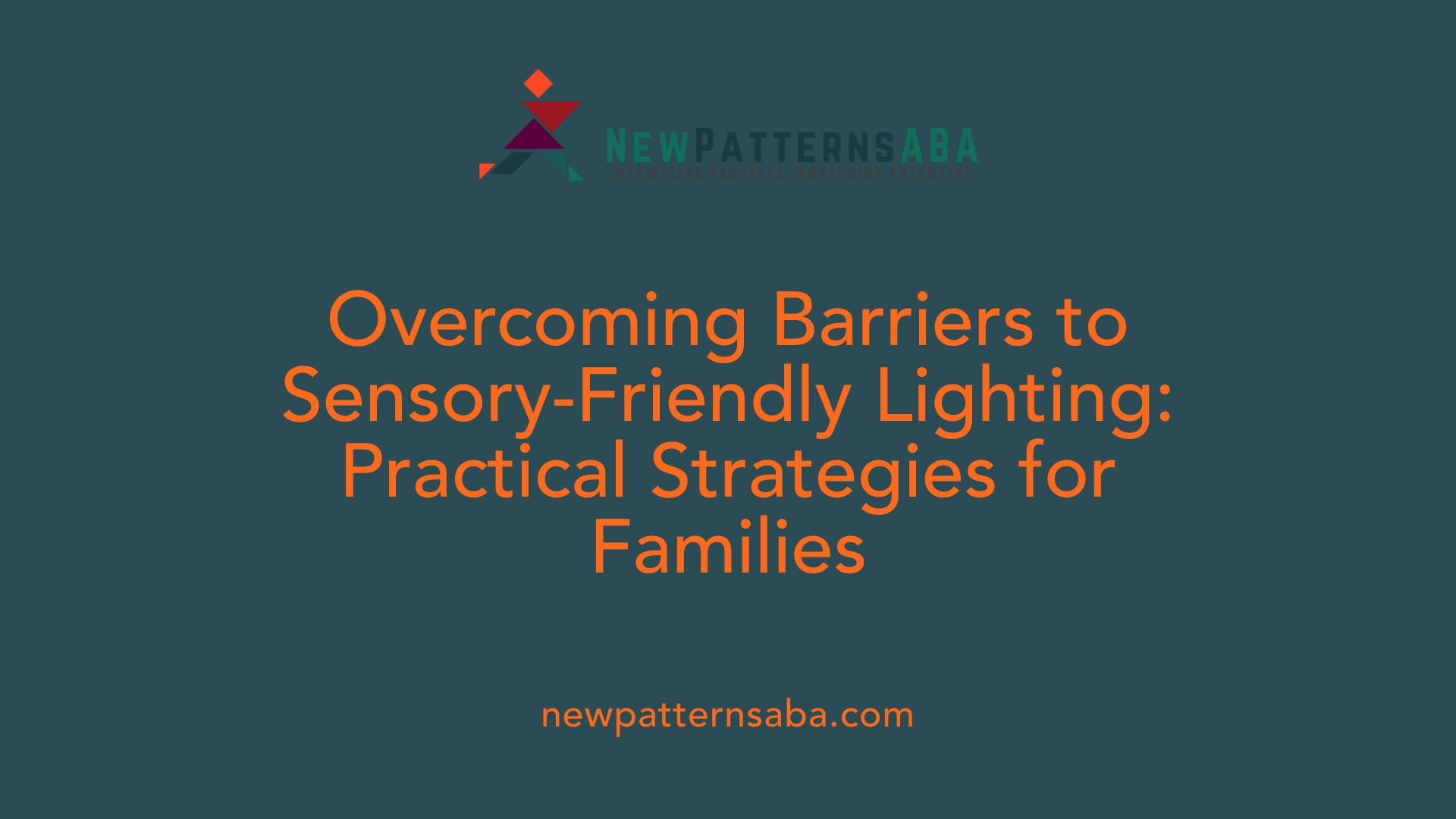
What Challenges Might Families Face in Accessing Sensory-Friendly Lighting?
Families aiming to create sensory-friendly homes for autistic individuals often encounter several obstacles.
Availability and Knowledge Gaps: Access to specialized lighting solutions like dimmable LEDs or filters can be limited, particularly in less urban areas. Many caregivers might not be fully aware of how lighting affects sensory overload or which products to choose. This knowledge gap sometimes leads to unsuitable lighting choices that worsen discomfort.
Cost Barriers: High-quality lighting adaptations or installing soundproofing to complement visual adjustments can be expensive. Not all families have the financial means to invest in such home modifications, especially when combined with therapy and other needs.
Practical Tips for Creating Supportive Home and Work Environments
- Use soft, dimmable lighting instead of harsh fluorescents to reduce anxiety and sensory overload.
- Incorporate natural light with diffusing curtains or blinds to avoid glare.
- Select calming, muted colors like blues, greens, and earth tones for walls and furnishings, which promote relaxation.
- Implement soundproofing and introduce background noise such as white noise or soft music to manage noise sensitivity.
- Organize spaces clearly with labeled storage and unobstructed pathways for predictability.
- Designate quiet retreat areas with comfortable furnishings and sensory tools like weighted blankets or noise-cancelling headphones.
Addressing Barriers
Collaboration with occupational therapists can help families identify cost-effective and personalized sensory adjustments, ensuring that changes meet the individual's specific needs. Education about the importance of lighting and sensory-friendly environments empowers caregivers and employers to make informed decisions, optimizing the well-being of those with autism.
These simple yet thoughtful lighting modifications, combined with other environmental changes, can substantially reduce stress and improve focus and emotional regulation at home and work.
Towards More Inclusive Sensory Environments
Optimizing lighting is a foundational step in designing sensory-friendly spaces that support individuals with autism. Through tailored, dimmable, and flicker-free lighting combined with thoughtful use of natural light and complementary environmental modifications, homes, schools, and workplaces can better promote emotional regulation and behavioral health. Collaborating closely with ABA professionals and occupational therapists ensures that lighting and other sensory accommodations align with individual needs, creating safe, predictable, and empowering environments. While challenges remain in access and awareness, practical solutions for lighting adjustments offer meaningful improvements to quality of life and therapeutic outcomes in autism care.

